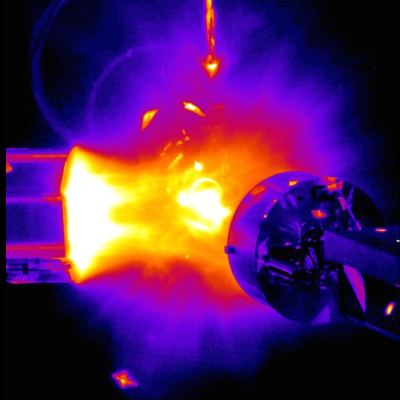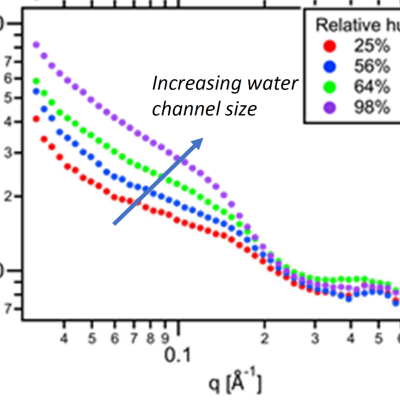LLNL researchers have developed a method to enhance the performance of polyelectrolyte membranes by using a humidity-controlled crosslinking process which can be applied to precisely adjust the water channels of the membrane.
Keywords
- Show all (113)
- Synthesis and Processing (20)
- Additive Manufacturing (13)
- Imaging Systems (9)
- Photoconductive Semiconductor Switches (PCSS) (9)
- Electric Grid (7)
- Materials for Energy Products (7)
- Semiconductors (7)
- Carbon Utilization (6)
- 3D Printing (5)
- Optical Switches (5)
- Material Design (4)
- Power Electronics (4)
- Direct Air Capture (3)
- Computing (2)
- Inertial Fusion Energy (IFE) (2)
- Instrumentation (2)
- Particle Accelerators (2)
- Rare Earth Elements (REEs) (2)
- Spectrometers (2)
- (-) Membranes (2)
Image

CRETIN is a 1D, 2D, and 3D non-local thermodynamic equilibrium (NLTE) atomic kinetics/radiation transport code which follows the time evolution of atomic populations and photon distributions as radiation interacts with a plasma consisting of an arbitrary mix of elements. It can provide detailed spectra for comparing with experimental diagnostics.
Image

LLNL researchers have developed an alternative route to protective breathable membranes called Second Skin technology, which has transformative potential for protective garments. These membranes are expected to be particularly effective in mitigating physiological burden.
For additional information see article in Advanced Materials “Ultrabreathable and Protective Membranes with Sub-5…


